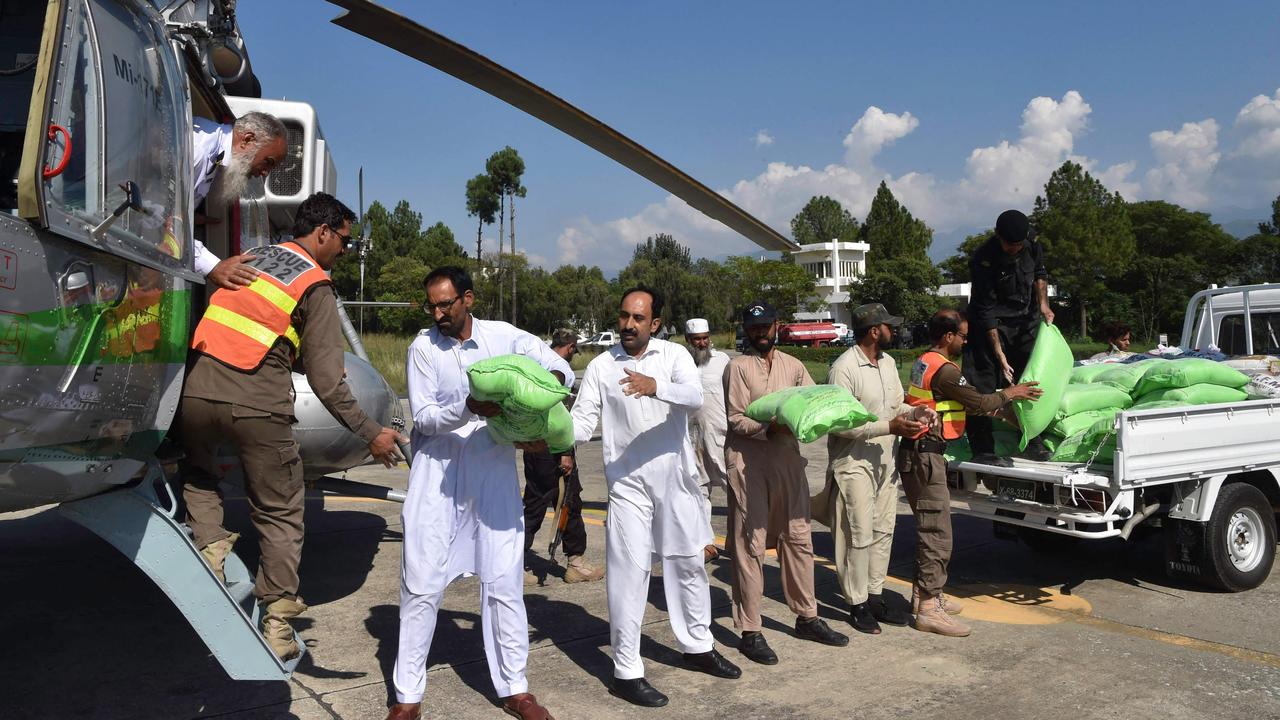Relief efforts begin as monsoon floods in Pakistan displace millions
Annual monsoonal rains are a normal part of life in South Asia, usually a welcome reprieve from the intensity of the region’s scorching summers, but this year’s deluge is a disaster in Pakistan

READING LEVEL: RED
A massive relief effort has begun in Pakistan in response to the country’s calls for help after devastating monsoon* floods.
A million homes have been destroyed and millions of acres of crops are at risk.
The Indus river is threatening to break its banks and inundate* a third of the country – an area roughly the size of Great Britain.

South Asia’s annual monsoon is an essential part of its weather system, responsible for irrigating* crops and replenishing lakes after the summer heat, but it can also unleash destruction, combined with the flow from melted glaciers.
These rains, which have affected 33 million Pakistanis, or one in seven, have come at a difficult time for the country, which was already in economic crisis.

Pakistan’s appeal for emergency help was answered, with first aid flown in from Turkey and the United Arab Emirates as the death toll rose to 1136.
Prime Minister Shehbaz Sharif, who toured the north of the country by helicopter, said the monsoon rains were “unprecedented* in 30 years”.
Climate Minister Sherry Rehman called it “the monster monsoon of the decade”. “What we see now is an ocean of water submerging entire districts,” she said. “This is very far from a normal monsoon.”

Foreign Minister Bilawal Bhutto Zardari warned that Pakistan’s situation would dramatically worsen without international financial aid.
“I would expect not only the International Monetary Fund* but the international community and international agencies to truly grasp the level of devastation,” he said.
“I haven’t seen destruction of this scale. I find it difficult to put into words … it is overwhelming.”
The flooded breadbasket provinces of Sindh and India’s Punjab, which grow high quality basmati rice for consumption at home and export abroad, have been badly hit. Many of those crops, providing both food and income, have been wiped out.
“Obviously this will have an effect on the overall economic situation,” Mr Zardari said.

Pakistan’s meteorological* department said the country had received twice the usual monsoon rainfall, but the southern provinces of Balochistan and Sindh had more than four times the average of the past three decades.
Much of Sindh’s farmland now resembles a vast inland lake around and north of the Indus delta*. Upriver, the Indus, source of 90 per cent of Pakistan’s water, is threatening to break its banks.
Much of the aid effort is focused in and around Sukkur, where all eyes are watching the Sukkur Barrage, a colonial-era sluice* system that redistributes the waters of the Indus along 9600km of canals.
Years of neglect have silted up the system and already much of the land it supplies resembles a vast lake.

Military helicopter pilots have reported that the flooding is so extensive they struggled to find dry places to offload supplies.
Should the sluice system fail, hundreds of thousands more Pakistanis could be inundated. Sukkur Barrage supervisor Aziz Soomro said the main headway of water was expected to arrive about September 5, but expressed confidence that the 90-year-old sluice gates would cope.
GLOSSARY
- monsoon: seasonal change in the direction of a region’s strongest winds
- inundate: to bring too much of something, to overwhelm
- irrigating: supplying land with water so that crops and plants will grow
- unprecedented: never having happened or existed in the past
- International Monetary Fund: aims for economic stability in 190 member countries
- meteorological: relating to weather conditions
- delta: low, flat land shaped like a triangle at the mouth of a river where it splits and spreads
- sluice: man-made channel for water with a gate that controls water flow and direction
EXTRA READING
Dealing with the world’s worries
La Nina tipped to drench Australia for third year
Nature and climate change make a destructive mix
QUICK QUIZ
- How many homes have been destroyed by the floods in Pakistan?
- The rains have affected how many Pakistanis to date?
- The Indus delta is the source of what percentage of Pakistan’s water?
- The sluice system redistributes water via a canal network of what combined length?
- How old are the Sukkur Barrage sluice gates?
LISTEN TO THIS STORY
CLASSROOM ACTIVITIES
1. What are the long-term problems?
Read the story carefully and write a list of the long-term problems that the massive flooding will cause for Pakistan. Next to each problem, write some actions that the international community can take to try to help to solve the problem.
Time: allow 15 minutes to complete this activity
Curriculum Links: English; Science; Geography
2. Extension
“Kids News shouldn’t have stories about disasters – kids can’t handle hearing bad news, it’s bad for them and they don’t need to know about these things!”
Do you agree with this statement? Write paragraphs explaining your opinion.
Time: allow 30 minutes to complete this activity
Curriculum Links: English; Personal and Social Capability
VCOP ACTIVITY
A message of hope
The Pakistan floods have been devastating for so many families in the affected communities. Sometimes when everything seems lost, a message of hope can be enough to bring a small smile to some faces.
Write a letter to an affected family with a message of hope. They have lost so much, but what is something you can say to try and bring a smile to their faces?
Remember to be empathetic about their situation and to use your VCOP to connect with them.

